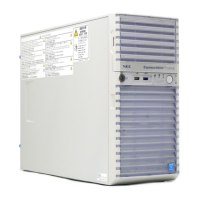(1) Active Upgrade Process
The Active Upgrade process involves the following basic steps:
1. Preparing for Active Upgrade process
– Managing Applications during the Upgrade Process
– Configuring Remote Desktop Connection
– Configuring Remote KVM Console
– Preparing an IP address to assign to the Upgrade Side
– Installing the Active Upgrade Console
– Configuring Windows Firewall for the Active Upgrade Process
– Copying Software Upgrade Packages to the System
2. Configuring Active Upgrade process
– Creating a Configuration File
– System IP Configuration on the Upgrade Side
– Selecting Disks to Upgrade
– Selecting Other Configurations to Include
– Selecting Application Services to Control
– Selecting Event Log Files to Back Up
– Configuring Custom Actions
– Programming Notes for Custom Actions
– Providing a Description for a Configuration File
3. Performing Active Upgrade process
– Performing a Readiness Check
– Splitting the System
– Verifying the Upgrade Side Before Merging the System
– Merging the System
– Verifying the Upgrade Side Before Committing the Upgrade
– Committing the Upgrade
– Finishing the Upgrade
– Aborting the Upgrade (if necessary)
– Viewing Active Upgrade Process Status
(2) System operation during upgrade
Active Upgrade splits the system into two independently running systems (split mode).
During upgrade, one side of system (CPU/IO module) continues to run application (Production Side), while the
other side of system (CPU/IO module) upgrades software (Upgrade Side).
Upon completion of software upgrade, the Production Side system runs synchronously with the Upgrade Side
(merge mode).
Details of these actions are described below.

